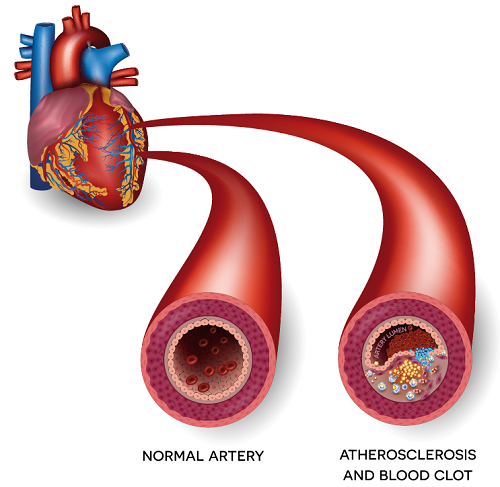
The underlying cause of most CVD is a build-up of fatty material in the arterial walls. The fatty material is known as atheroma, whilst the build-up of fatty material is atherosclerosis. Atherosclerosis results in a narrowing of the arteries and restricted blood flow. Reducing the supply of oxygenated blood to the cardiovascular muscle initially results in the pain and discomfort associated with angina and potentially leads to a myocardial infarction (MI) or heart attack.
Most fatalities relating to CVD are caused by MI. Within the UK approximately one patient will suffer a myocardial infarction every 5 minutes, this accounts for 100,000 attacks each year. MI is more prevalent in men than women, but other factors such as age, ethnicity and overall health also affect the prevalence.1
A stroke results from an interruption in blood flow to part of the brain. This can be the result of a blood clot (ischaemic stroke) or rupture of blood vessels in the brain (haemorrhagic stroke) causing blood to leak into the brain tissue.
Stroke accounts for more than 34,000 deaths in the UK annually. The BHF estimate that 1.4 million people in the UK have suffered a stroke. People with heart failure or diabetes are twice as likely to have a stroke than people without.1
The high levels of morbidity and mortality associated with cardiovascular disease means that any action or advice that can be provided to identify and reduce a patient's individual risk is likely to have a significant patient benefit by improving the patient's quality of life and life expectancy.
